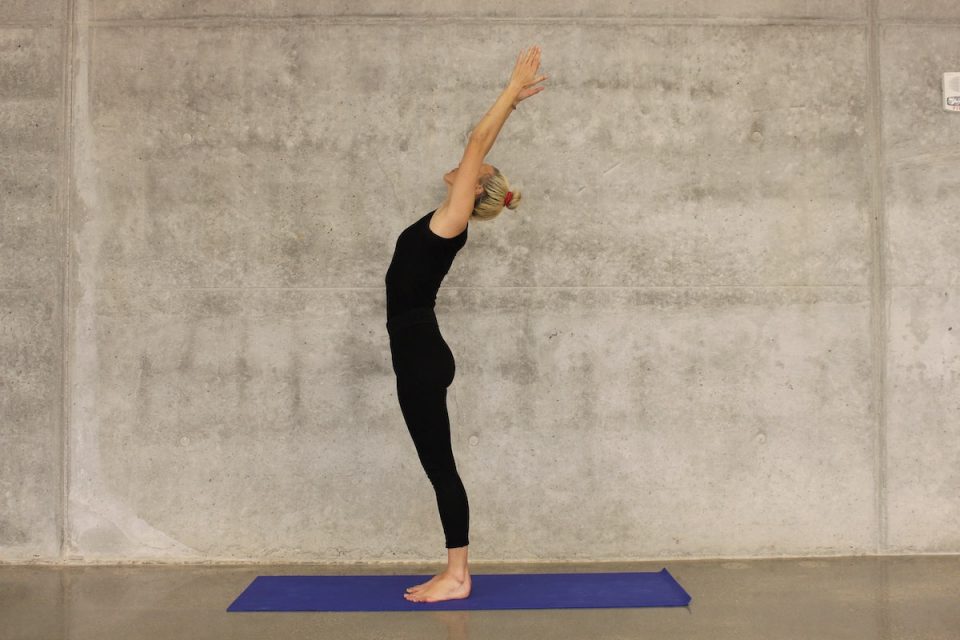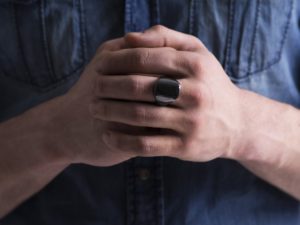This Week’s Thrive In Five Is About Yoga for Anxiety, specifically Yoga Breathing and Yoga Moves for Anxiety
A Thrive in Five tip is a tip that we can impart with you in five minutes or less, that you can adopt in five minutes or less.
This week, we’re talking about anxiety. Our Health Coach Liz shows you some yoga-based techniques to help handle anxiety.
The power of breathwork for anxiety
Many people know that breathing and breathwork is a great tool to help calm the mind and calm the body systems. So the first yoga-based technique to help handle anxiety that we’re going to look at is alternate nostril breathing.
Alternate nostril breathing actually helps to calm the mind, helps to balance the left and right sides of the mind. It gives you a meditative focus and helps you move into your parasympathetic nervous system, so you feel calmer afterwards.
Alternate nostril breathing technique
You can do this for one minute, five minutes, find what works for you to balance your mind a little bit.
How to do alternate nostril breathing:
- Close one nostril with your thumb and then breathe in through the other open nostril
- Then you close the nostril you breathed in through and open the other nostril and breathe out
- Breathe in through the same nostril you just breathe out of
- Then you close the nostril you breathed in through and open the other nostril and breathe out
- Repeat for a minute or five minutes and that’s all!
You might want to rest your finger on your head and use your thumb and your fourth finger, that might make it easier.
Alternate nostril breathing it’s very simple, very calming. Give it a go.
Yoga Stretch For Anxiety
Another yoga-based technique to help handle anxiety is a simple stretch that Liz is demonstrating in the above video. The yoga move is the head hang.
We tend to hold a lot of tension in our neck, shoulders and back. Exacerbated for those who sit for most of the day to work. This head hang yoga pose is a great way to release that tension, let the neck, shoulders and upper back relax and let go, leaving you less tight and feeling more relaxed.
How to do a forward fold Head Hang Yoga pose:
- Stand with your legs hip width apart
- Bend forward from the hips into a forward fold, elongating the spine as you go
- Bring the head all the way down and roll your body down slowly into a forward fold (bend your knees slightly if it’s uncomfortable)
- Hang there and take some deep breaths. You might even feel some vertebrae clicking and popping a little bit as you de-stress the top of the spine there
- Relax in this position, take some deep breaths. Let the head relax, let the neck relax, let the tension melt, this is very calming.
If you have any back issues or you’re concerned about this position, what you can do is: - Kneel on the floor
- Take something in front of you, so a bed as Liz demostrates, a chair, sofa something that is a comfortable heifght
- Have the knees quite far back, to a poasition that feels comfortable for you
- Drop the head, sit back and drop the head towards the floor
- You should still get that same hanging sensation and you still get a nice stretch down the upper back, but we’re taking any strain from the lower back.
So take five minutes today and try one or both of these techniques and hopefully you’ll feel much better. Practising these yoga-based techniques for anxiety when you’re not in an anxious state will help you feel empowered to use them if and when you are feeling anxious.
So give it a go and let us know how you get on. See you next time.
However You’re Feeling, Please Get In Touch With Us.
You can look at some of our content on the blog or listen to our podcast. Download a free chapter of Rise and Shine.
At Bodyshot Performance we work with businesses looking to bring energy and vitality to their teams, leading with wellbeing. Find out more about how we can support you and your teams. Checkout our upcoming Workplace Wellbeing webinars.
For more great wellbeing content follow us on social LinkedIn, Facebook, and Instagram.
Find out what your Health IQ is and get a free personalised 39-page report. Built around our six signals, which are sleep, mental health, energy, body composition, digestion, and fitness.


